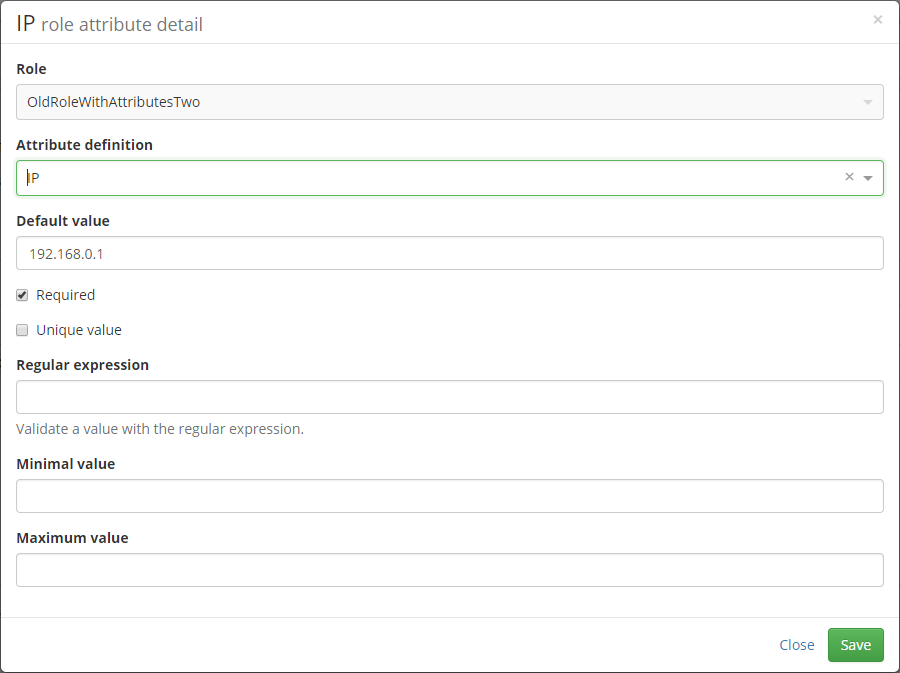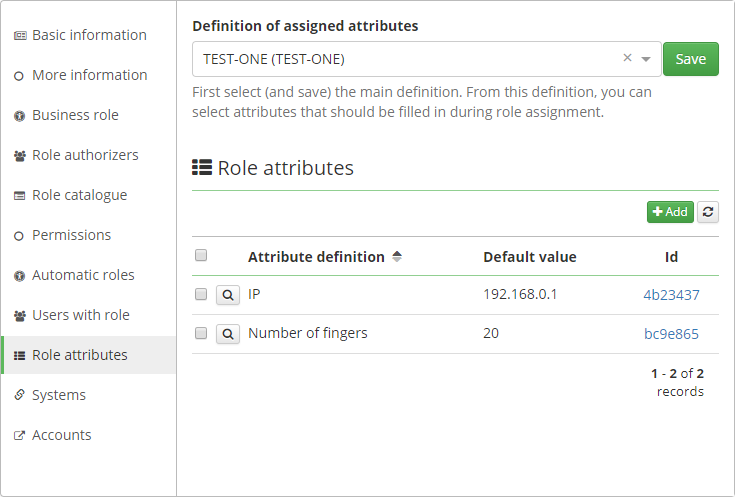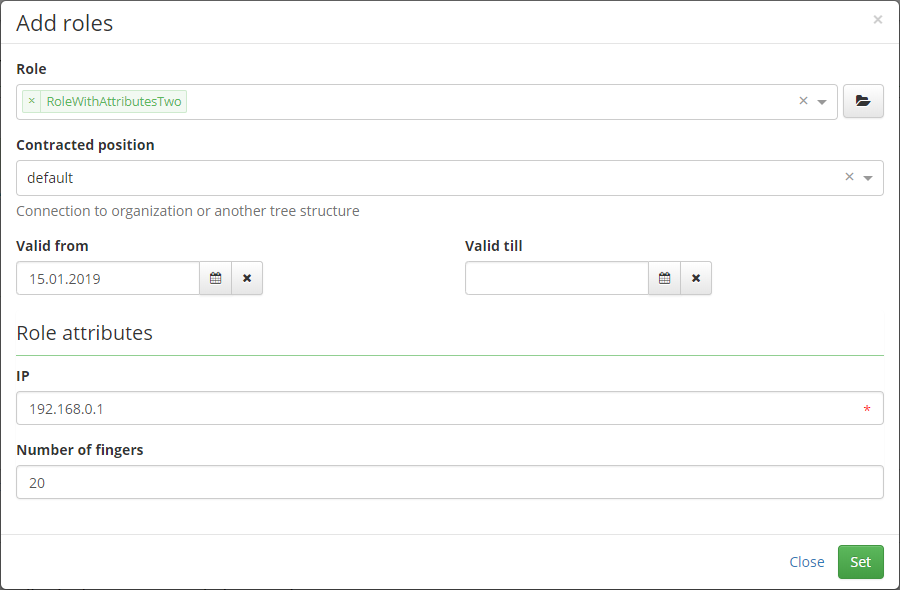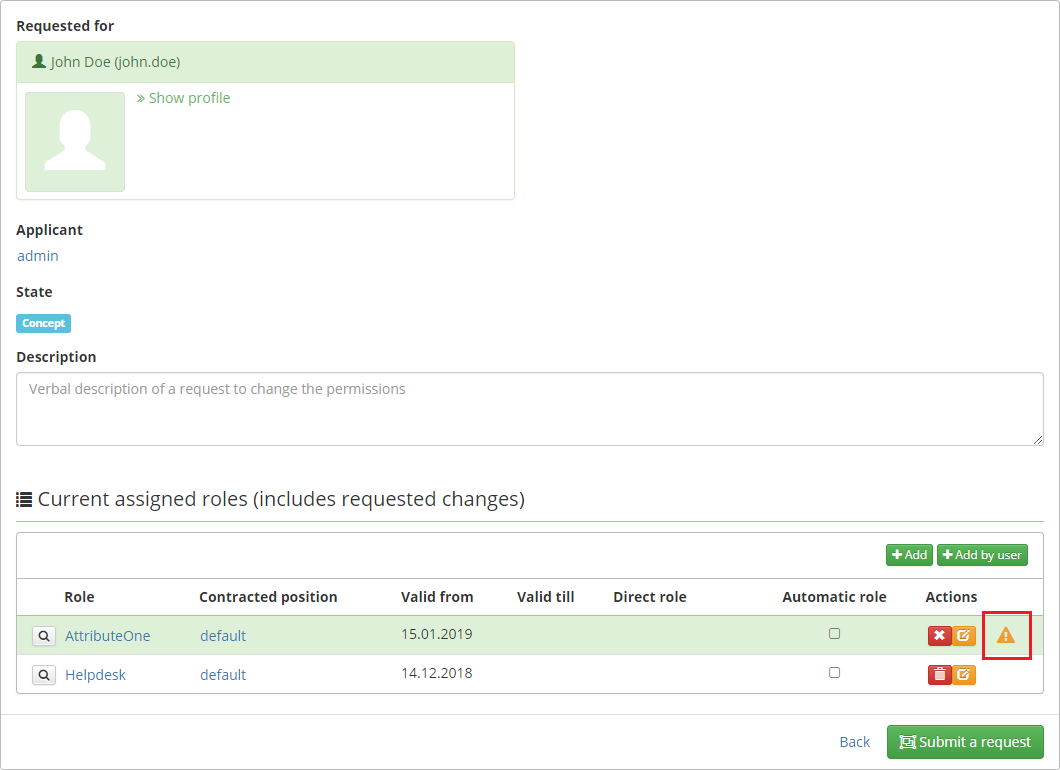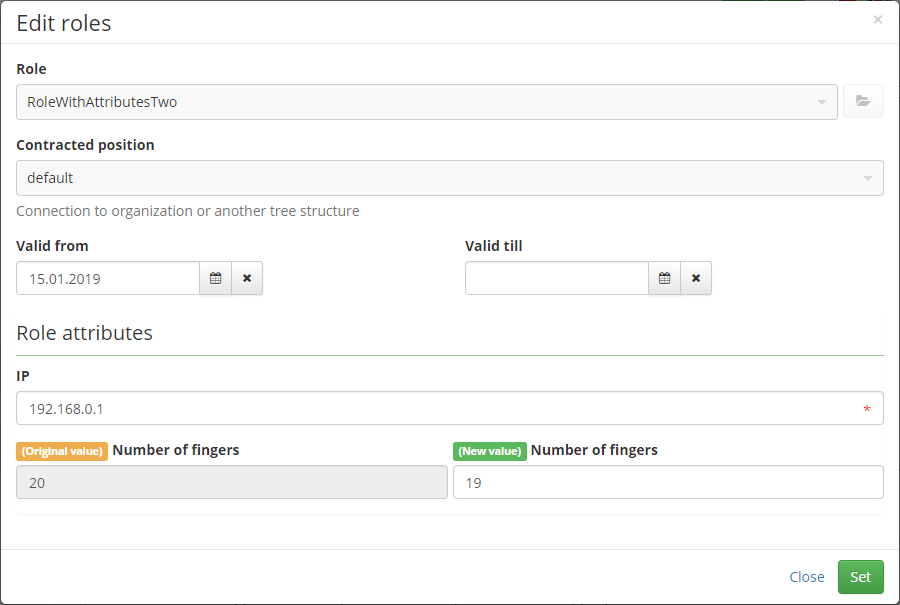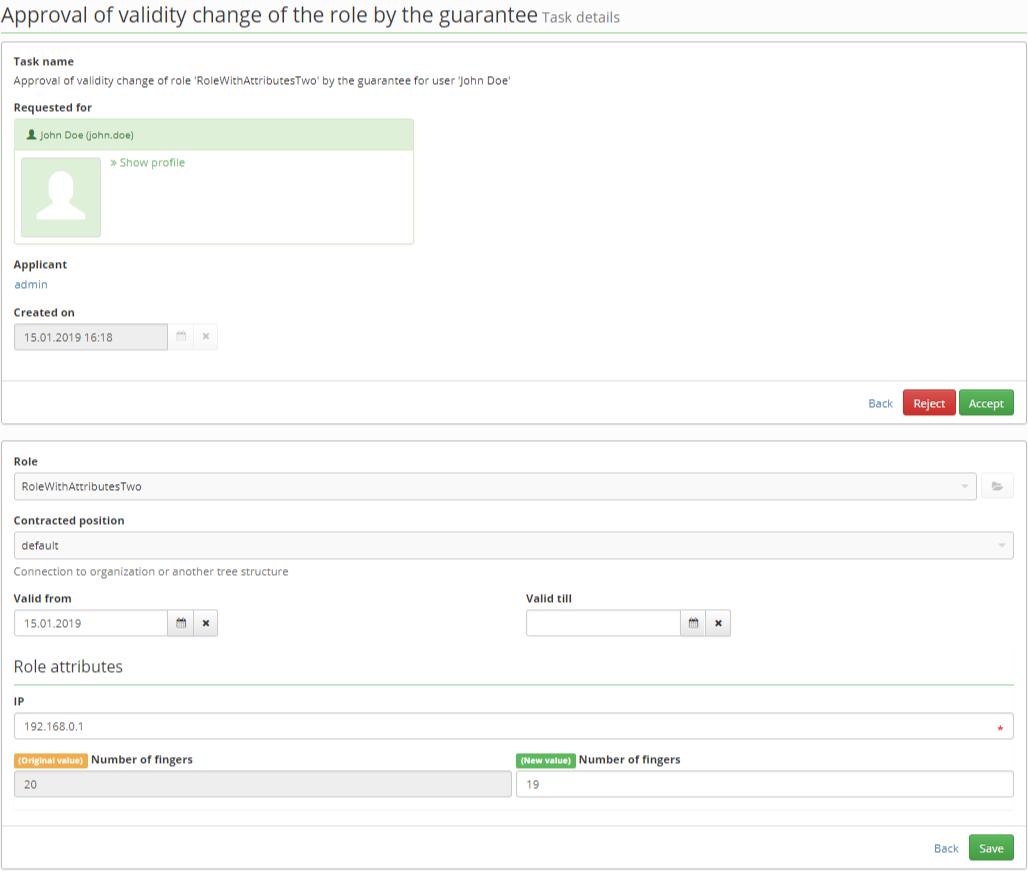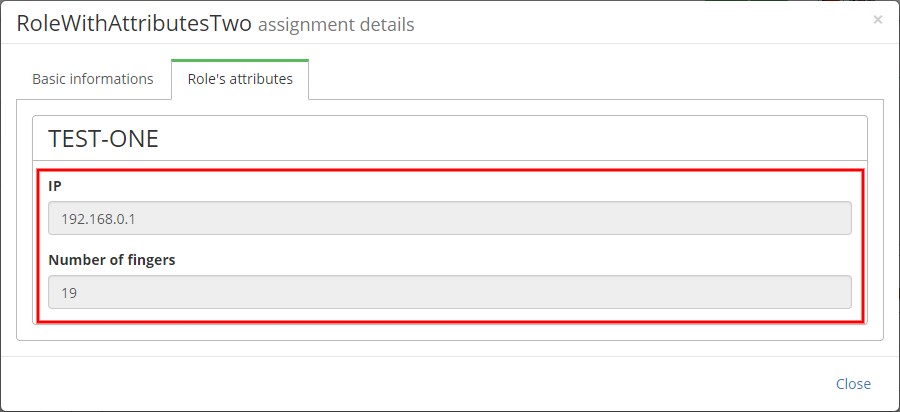Attributes of role
What are role attributes
Role attributes determine what additional information can (must) be filled in a user's assigned role. A typical example can be the IP address of a user's end station, which must be filled in a role assignment request.
The definitions of what attributes are to be filled for the role are managed on the role detail (role attributes tab). Here, you define not only what attributes to show in the request, but also their default values and validation settings. This definition is part of the role approval process (off by default).
How it works
Definition
First, you need to create the main definition of all attributes which could be used in role sub-definition. The main form definition can be created in the Form definitions agenda.
Then, you need to create sub-definition of attributes witch should be filled in requesting a role. Sub-definition can be created on the role detail on the Role attributes tab. In sub-definition you can select an attributes only from main definition. So first what you need to do, is select main definition and save it. Then you can create attribute definition for the role.
Attribute definition for the role define:
- Definition of attribute from the main definition.
- Overrides the default value. Default value from attribute in main definition will be prefilled (only on frontend).
- Overrides the validation settings. Validation settings from attribute in main definition will be prefilled (only on frontend).
Using on the role request
If some requested role has attributes, then is rendered form on role concept detail:
If you add multiple roles in one request and some from this roles will have required attribute (without default value), then will be created concept not valid. In this case you will see warning icon on the unvalid concept.
You can modified existing attribute value in assigned role. For this case was created new mode for highlight changes on detail of role concept:
If a request that contains attribute roles is submitted, a standard approving process is executes. If the role with the attributes is approval, then the detail of the concept role, including the attributes, is displayed in the detail of the approval user task.
Upon successful completion of the request, the resulting concept role attributes are copied to the assigned role (IdmIdentityRole). Attributes assigned to roles can be displayed on the identity detail (Roles → detail → Tab "Role's attributes").
Provisioning of assigned roles
For the purpose of provisioning assigned roles, new attributes (User assigned roles and User assigned roles (for this system)) were created, which can be used in system mapping for provisioning identities. Input of the transformation into the system is a list of valid assigned identity roles. This assignment is represented by the AssignedRoleDto object, which mirrors the object IdmIdentityRoleDto and tries to simplify the work with assigned roles in the transform. This simplification is primarily based on the fact that the object contains the entire DTO (role, identityContract, …) instead of the UUID and mainly contains a map of all the attributes of the assigned role (where the key is the attribute code and the value is a list of all attribute values).
Example script for print assgined roles to the string:
import eu.bcvsolutions.idm.acc.domain.AssignedRoleDto; import eu.bcvsolutions.idm.core.api.dto.IdmRoleDto; if (attributeValue) { String result = ""; for(AssignedRoleDto dto : attributeValue){ result = result + "Role: [" + dto.getRole().getCode() + "] Attributes: [" + dto.getAttributes().toString() + "]"; } return result; } return "";
Output of this script:
Role: [Helpdesk] Attributes: [[:]] Role: [RoleWithOneAttribute] Attributes: [[IP:[192.168.0.122]]] Role: [RoleWithTwoAttributes] Attributes: [[Number of fingers:[20], IP:[168.192.0.10]]]
